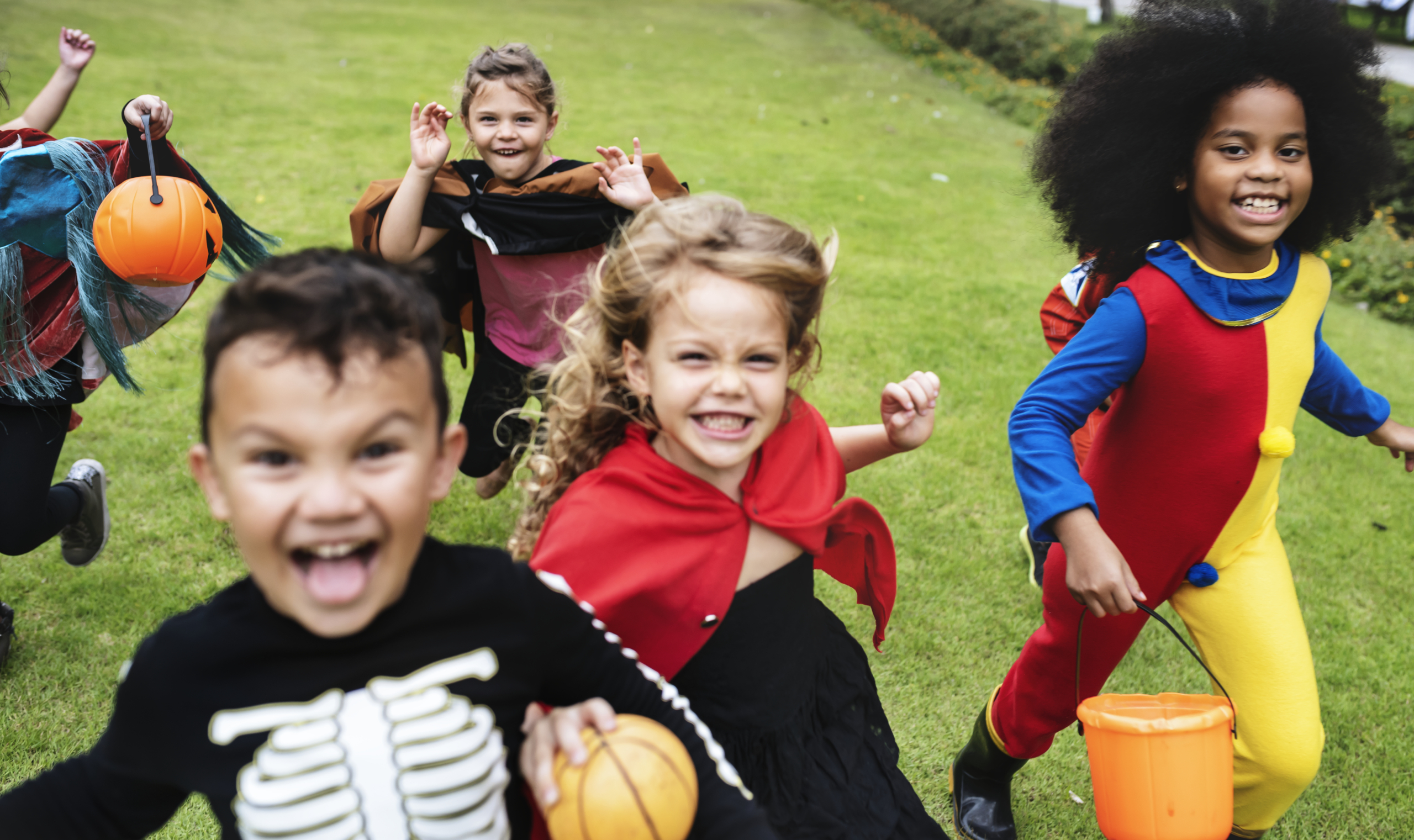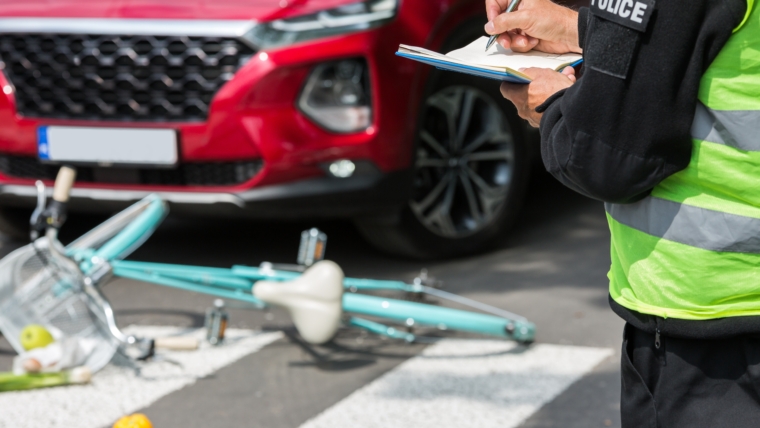Halloween is many children’s favorite day of the year. However, for children with Autism it can be more spooky than a treat. They are being forced to communicate with potentially dozens of unknown strangers which can be both challenging and stressful. Children with Autism often like routines, may have sensory preferences that make costumes difficult and may not fully understand why people are dressed in costumes. Many Halloween costumes and decorations can even be scary for neurotypical kids.
The good news is that there are things you can do as a parent to make Halloween a fun and enjoyable experience for any kid, even a kid with Autism. As a parent, you want your child to experience all the joys of childhood and create the same beautiful memories you parents created for you. For your family, this may include Halloween.
Following these ten steps can help make Halloween a positive experience for your family. Read this right away, you will want to start a few weeks in advance.
Tip 1: Start having your child try on their costume a few weeks in advance.
Last year, I was working with a four year old child who was very excited for Halloween. He picked out his costume and was talking about going trick or treating for weeks. His mom was very excited since it was the first year he doing well enough to be able to participate.
When Halloween finally came and it was time to put on the costume, he had a complete and total meltdown. He screamed and cried and kicked and absolutely refused to put on the costume. He wouldn’t even try it on.
Mom tried to make it a game, man handle him in it and bribe him but it was no use. He was not wearing the costume. Now him and his mother were both frustrated. Hallowen was ruined.
This particular child had a lot of sensory aversions. The costume was a different material and shape of the clothing he was used to wearing. It was more constricting and putting the whole thing on at once was just too much for himl.
Sometimes it takes practice to get your child to try on his costume. I recommend always having your child try on his costume ahead of time so that you can find one that is suitable for your child, especially if they have sensory needs. If you have a hard time having them keep on sunglasses at the beach or hats during the winter, you probably don’t want one with a mask. Keep into account you child’s past preferences with clothing when choosing a costume. If your child has had any sensory aversions keep it as simple as possible. A shirt with their favorite cartoon character is a perfectly acceptable costume.
If your child wants to dress up in a particular costume but is having difficulty wearing it gradually get them used to it. You may want to start off by simply having the costume out and having them touch it. Then have them put on just part of the costume. You can even have them put in just one arm or leg and then be done for the day. The earlier you start the more time you will have to gradually expose them to the idea.
Some kids will also feel less stressful if other members of your family wear a costume. If you think this would make your more comfortable, have the whole family dress up for dinner for a few days before Halloween! It could be fun!
Tip 2: Practice ahead of time.
Practicing ahead of time is not just for the costume. You should also practice having your child ring a doorbell, wait and say trick or treat. You can rehearse this in your own home. Rehearse it several times a day for at least the week leading up to Halloween.
Initially, give your child a piece of candy, a new toy or even a penny for a correct response. This will serve as a reinforcer. Anything is fine as long as your child wants it. You will want to continuously reinforce your child’s behavior until they have learned to respond correctly.
Once they have responded correctly at least five times start to practice other variables such as someone not ringing the door, not having candy or your child getting a candy they don’t want. Let’s face it. Not everyone celebrates Halloween, will answer the door or buys the good candy.
If possible, ask a friend or family member if you can practice at their house too so your child has experience with multiple locations. It is also a good idea to practice with a family that has a dog if you have a friend or family with a dog. Hearing a dog barking and having someone open the door can be stressful for many children that are not used to animals.
The more your child is prepared for what will happen, the more enjoyable Halloween will be.
Tip 3: Use a social story
A great way to convey information to your child about what will happen on Halloween is to use a social story.
A social story is a short story written in a specific way that is designed to provide information to your child about how to respond in a social situations. It is one of the most effective and well researched strategies for teaching children with Autism about new situations.
Here is a social story I have written specifically with your family in mind.
HALLOWEEN SOCIAL STORY

Soon it will be Halloween. Halloween is fun.
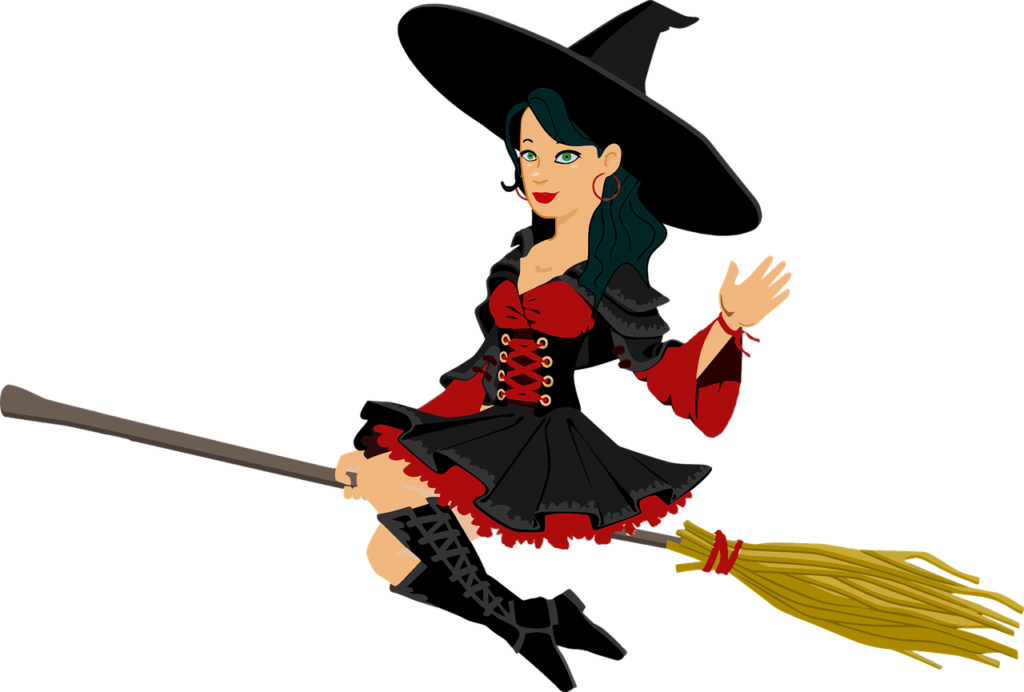
On Halloween, people wear costumes. Costumes make people look different. But they are still the same person. Wearing a costume is fun!

I can wear a costume on Halloween too! For one day, I can be anything that I want. That’s awesome.

Sometimes costumes can be a little scary. That’s ok. I will remember, under the costume is a person. If I get scared by a costume, I can tell a parent and they will help me feel better.

On Halloween, I will go trick or treating. Trick or treating is fun.
I will walk to someone’s door and press the doorbell!. Sometimes they will answer. If they answer, I will say trick or treat and they will give me candy. That’s so cool.
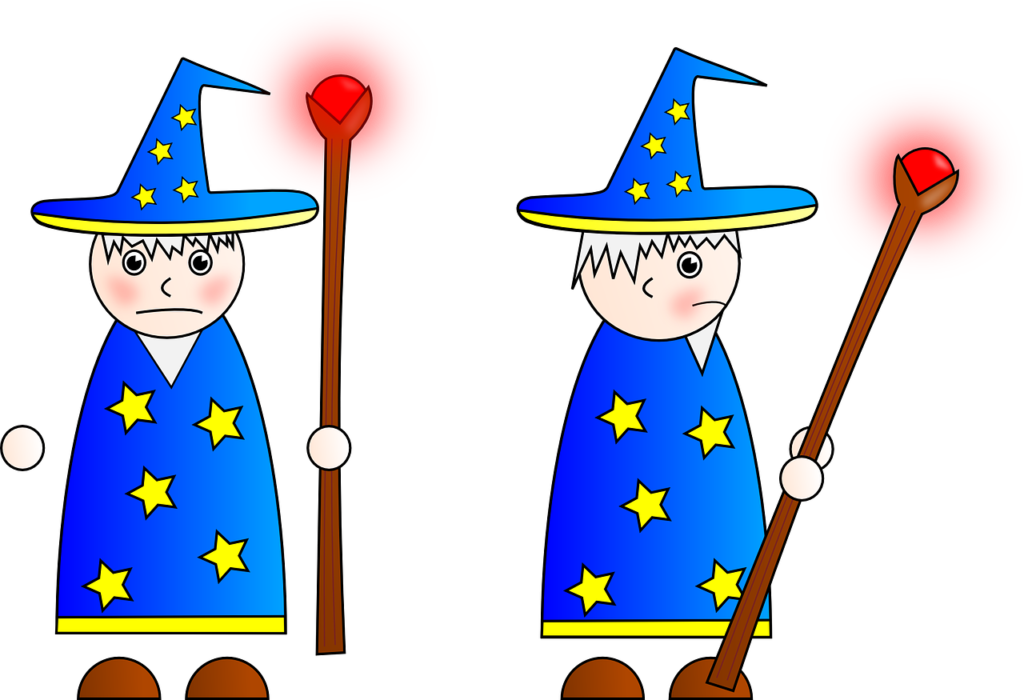
Sometimes people won’t answer. That’s ok. I can go to another house.
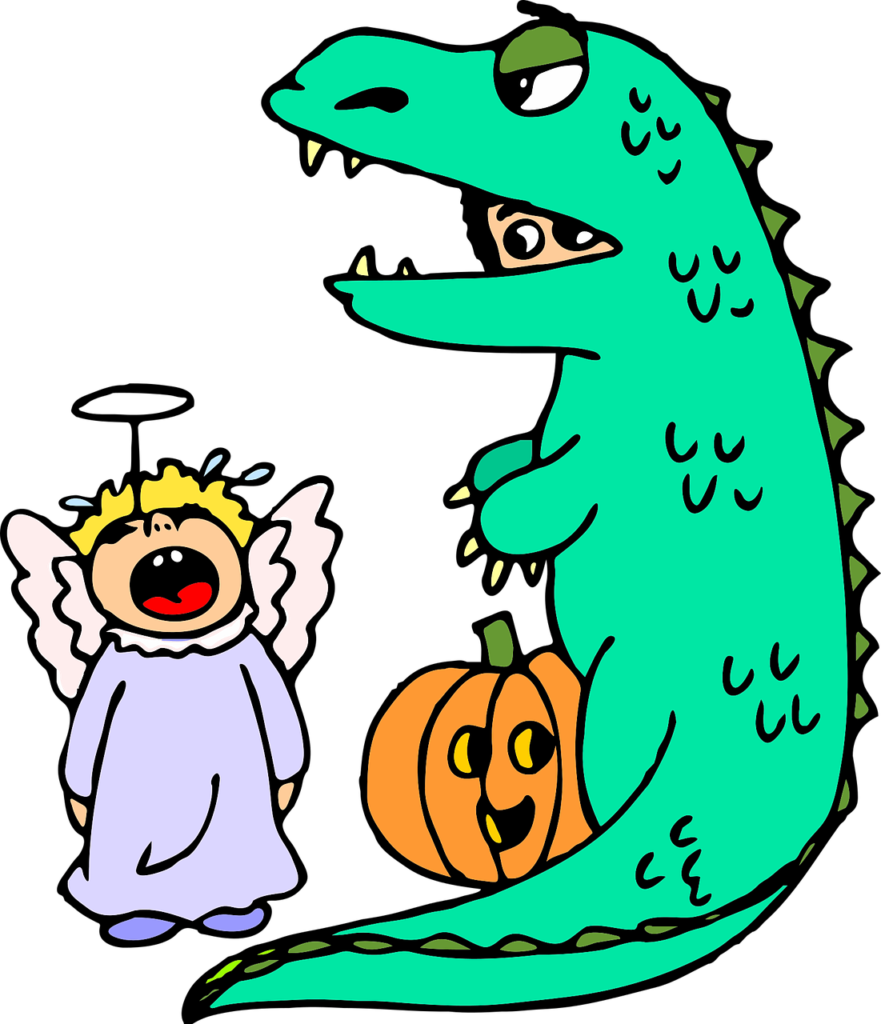
Halloween is so much fun but sometimes I will need a break. I may hear loud noises like a dog barking, a person yelling or a Halloween decoration that makes sounds, When I feel too excited or I get scared I can take a break.

It is important to stay safe on Halloween. Kids need to stay with an adult. I will always stay with a parent on Halloween.
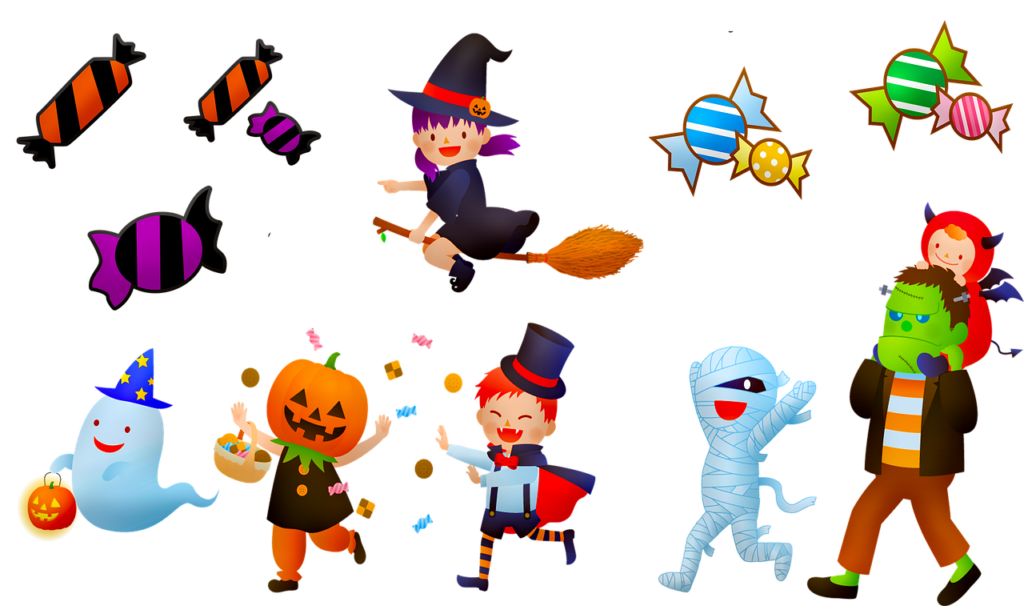
I may get lots of treats on Halloween. I can eat ______ number of treats on Halloween. I will save the rest for later. My ________________ will let me know when I can eat my treat.

Halloween is fun
Tip 4: If your child can’t say trick or treat bring cards to distribute
Some kids with Autism will be able to say trick or treat and some will not depending on how much language they have. Let’s face it, not everyone is necessarily very patient. Everyone seems to have an opinion on what you should do and how you should raise them. I have taken kids with Autism trick or treating who could not say trick or treat only to have people at the door scold them or judge them.
To avoid this I recommend printing up a card and having your child and them to people in lieu or saying trick or treat if they do not have language or get nervous in new social situations.
Not only will this avoid a potentially uncomfortable situation but using pictures is a valid form of communication and it will allow your child to participate more fully in the experience. You should teach your child to do this ahead of time, ideally when you are rehearsing like previously suggested above. The good news is picture exchange is the most common form of communication that children with Autism learn when they do not have language so this may not be too much of stretch for your child.
I have created a visual that you are free to print and use.
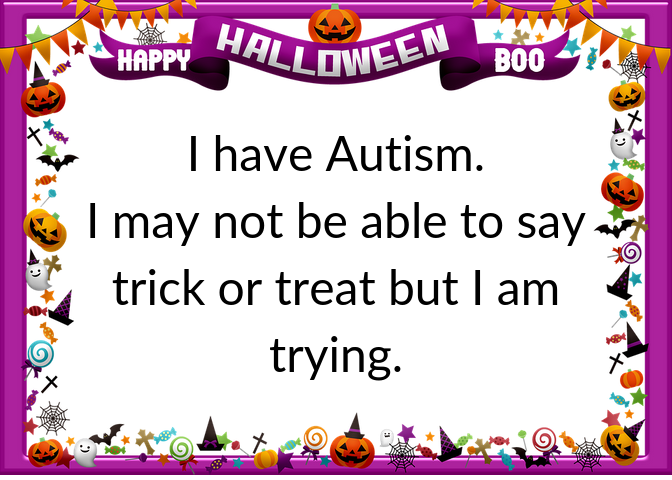
Tip 5: For safety purposes have your child wear a glow stick especially if they elope.
To some putting a glow stick on your child may be silly. Others may think it’s genius! I go camping all of the time. One rule is that everyone wears a glow stick at night, even the dog!
According to the National Safety Council, children are twice as likely to get hit by a car on Halloween than on any other day.
If your child elopes, make sure you put a glow stick around their neck. If for whatever reason they run away and it is dark at night you will be able to see where they went.
Even if you don’t think your child would run, do it anyway! You can get glow sticks in almost any dollar store! Children get spooked on Halloween! That’s the point!
If an animatronic startles them and they run back towards the street, a glow stick will make sure that drivers see them even on the darkest street.
Tip 6: Visit houses of familiar people
If your child does not do well with meeting new people, one way to make Halloween easier for them would be to visit the house of familiar people. You may not get as many houses in but the good news is candy goes on sale the day after Halloween! You can always get more candy.
Visiting four to five friends houses and having a really good time will create a lot better memories than visiting fifty houses and your child having an epic meltdown.
Depending on where you live, you may also be able to trick or treat at the mall or you might be able to attend a trunk or treat which more and more schools are hosting each year.
Visiting houses of friends and family is also a good idea when you are practicing for Halloween.
Tip 7: If possible drive instead of walk and take breaks between houses
If you can, bring a car with you when trick or treating instead of walking from house to house. Some kids will need a break after walking to a few houses.
Your child will be doing things that may be challenging for them. After 10 times, they may have had enough.
However, simply taking a break in a familiar place for five minutes may be just what they need to regain their composure and continue on.
It is also a good place to warm up when it gets cold! My mom used to always drive us around and give us hot chocolate between houses. It was generally cold by Halloween in New Jersey where I grew up.
This also leads to Tip 8!
Tip 8: Bring calming sensory toys
Bring calming or sensory toys and activities with you so that your child can use them in between houses. This works especially well when you bring the car with you.
Let’s face it, for better or worse, kids are obsessed with electronics. This can be as simple as letting your child watch the iPad for a few minutes in between houses. Just make sure they won’t get upset when it is time to put the iPad away when it is time to go back to trick or treating, Alternatively, you can bring along calming stuffed animals, blankets or sensory balls.
Do whatever works for your child. Think about what you bring to entertain them while you are out to dinner and they are waiting for their food to come and bring that!
However, listen to your child. If they are done, they are done. If they are communicating to you either with words or with their behavior that they had enough, end the night before a meltdown occurs.
Tip 9: Expose your child to as many costumes as possible before Halloween
Costumes can be scary for all kids. Expose them to costumes and explain to them what kind of costumes they may see.
My suggestion is to go to your local costume store, buy one of each costume, model them for your child and return them the day after Halloween! JUST KIDDING! Google is your friend!
Google Halloween costumes and show your child photos of people in costumes. Explain to them that they may see blood, monsters and other scary things but they are not real. I do recommend getting at least one mask and allow your child to take it on and off of you to demonstrate that a mask may look scary but there is a person under the mask. Make it a game and keep it fun.
The more your child understands that Halloween is fun and the scary stuff isn’t real, the more enjoyable that Halloween will be for them.
Trip 10: Bring a visual schedule with you
My final tip is similar to using a social story. Think about it as a our social story cheat sheet. By the time Halloween comes, your child should already be familiar with the steps required to knock on someone’s door, wait, say trick or treat, get candy, say thank you and leave. However, just in case, it is a good idea to have a visual reminder. In all the excitement they may forget.
You can also bring the social story but, it may be more time consuming and your child may be too excited to sit and pay attention to it. A visual strip with the photos that were used in the social story will likely be enough to quickly go over the necessary steps if they forget.
You can download the photos from this story, put them all into a word document in order and print it up to take with you.
Halloween can be a fun and enjoyable experience even for a child with Autism. It may take some extra work but it is worth it. Halloween was one of my favorite days of the year as a child. So many parents of kids I work with tell me that they skip Halloween because they are afraid of how their children will react. I am passionate about making sure your family gets to have all the experiences that you dreamed about having with your child. Autism does not have to take away the memories and events you imagined you would have when you first became a parent. I hope these tips help your family have an amazing Halloween.
If you have any questions about what this blog post says, please comment them below. I will be monitoring this post and will answer any questions you have to help you prepare for Halloween.
References
https://www.nsc.org/home-safety/tools-resources/seasonal-safety/autumn/halloween

